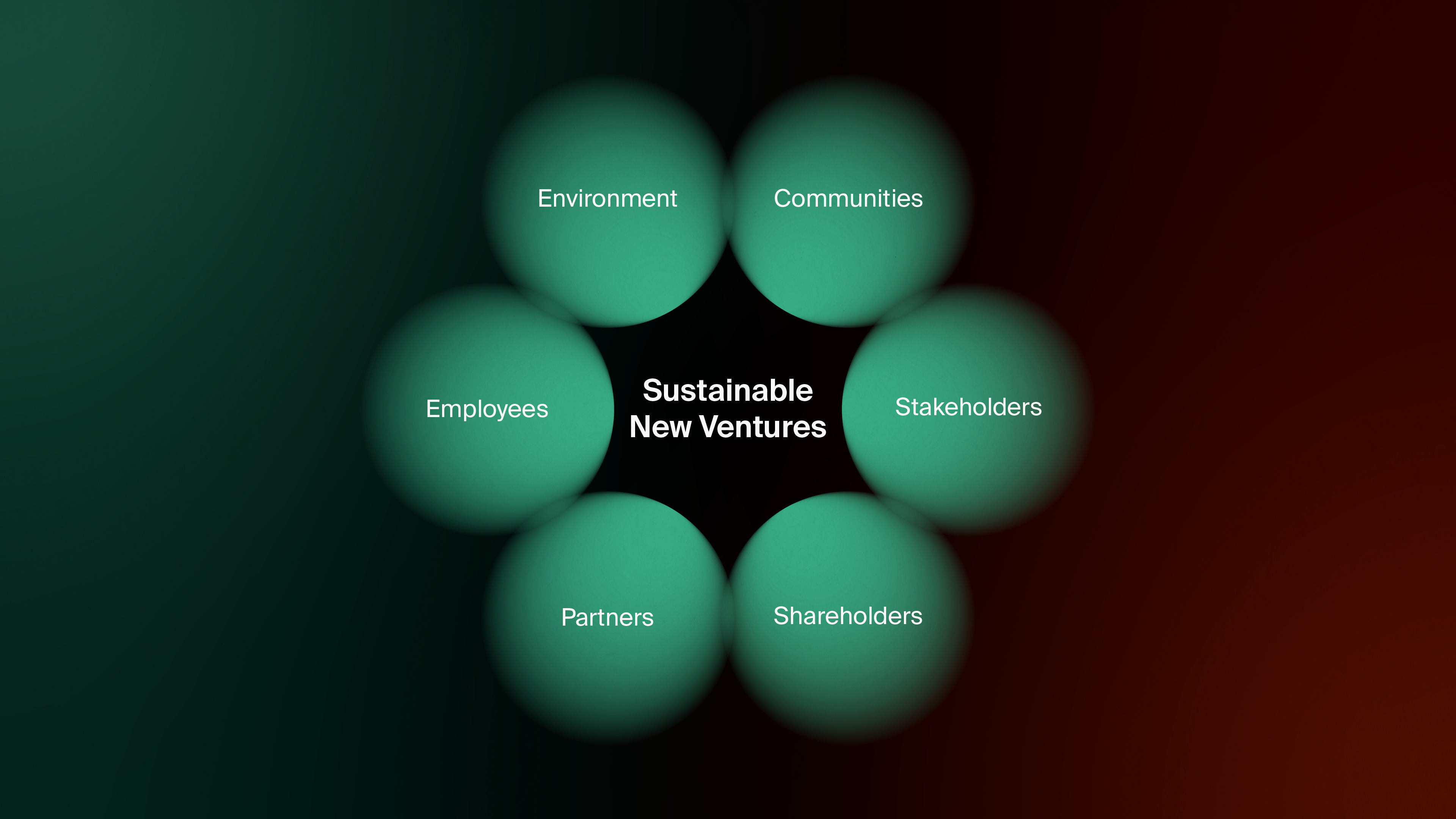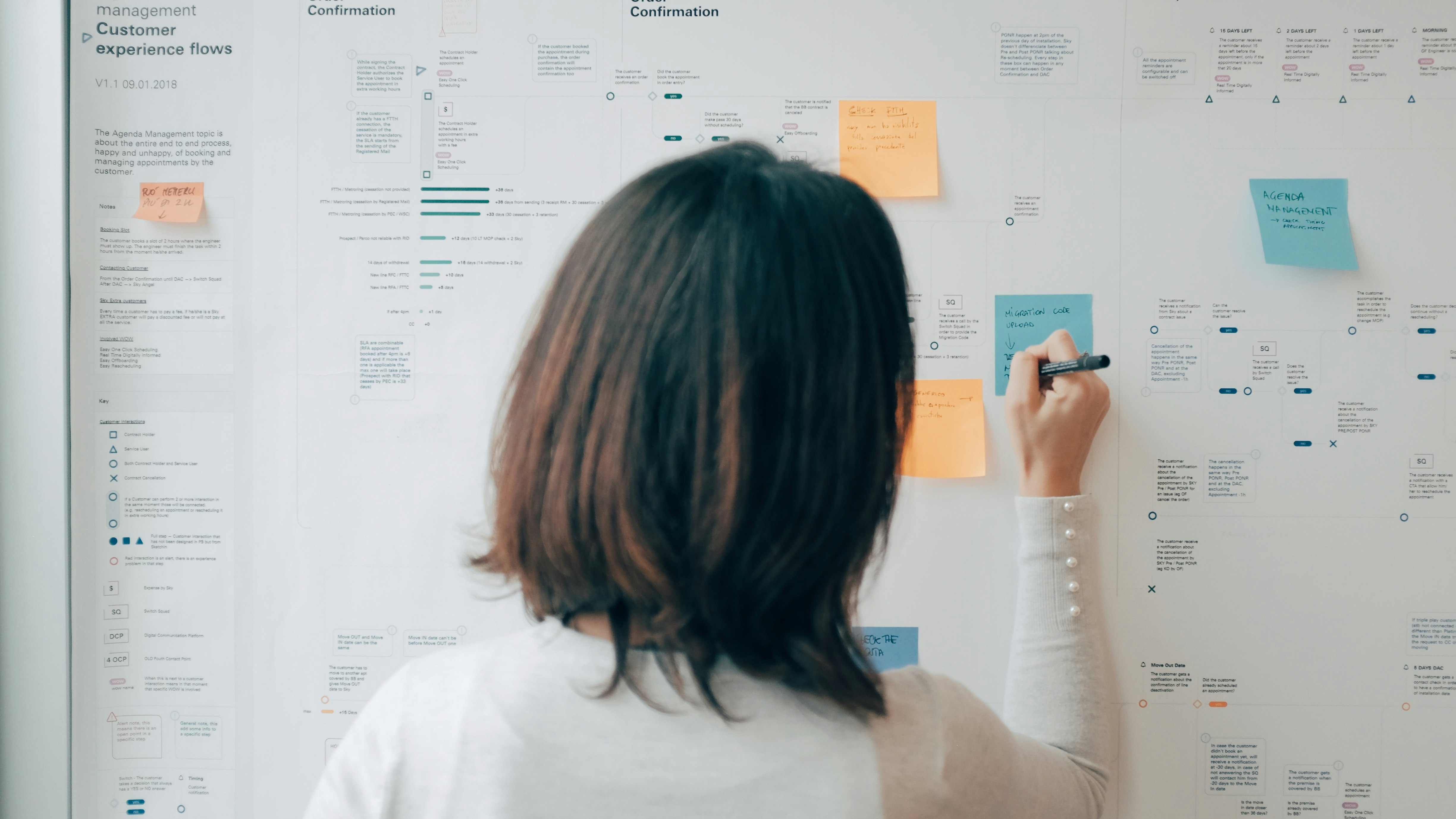Sustainability doesn’t relate to the “environment” only but has urgent social and economic implications. The proof is a recent statement on the new US economic policy putting sustainability at the heart of its reconstruction and the well-being of its middle class.


An answer to corporate sustainability: Venture Building
Sustainability is a strategic asset for companies. Creating new ventures based on this value improves social and environmental well-being and competitiveness.
CEO
29.06.23 - 6 mins read

Sustainable businesses’ obstacles
Businesses face a few critical obstacles in their journey to sustainability:
- Business model: When defining a new business model or evolving an existing one, sustainability must be considered a fundamental element of the company’s mission and strategy.
- Data Analysis and Futurescaping: A solid database to rely on is necessary. Companies often do not track their impact on the ecosystem: environment, communities, markets, finances, end customers and workers. Data collection is slow and expensive but necessary to ensure future-proof offerings.
- Internal culture: Aligning management to a new corporate vision that includes sustainability as a fundamental element implies a profound corporate and managerial culture transformation.
- Context: Assessing the company’s state in relation to the sustainability dimension is essential. It may be the most challenging aspect to deal with. It requires self-questioning and objective reviewing in some situations.
Despite public opinion and increasingly stringent rules, sustainability is too often an accessory element of a process that aims to maximise short-term profits but has no positive long-term effect, neither for communities nor companies.
The durability of value should be at the heart of boardroom concerns. The value of a sustainable initiative is being able to remain relevant in the market and society in 20, 30 or 50 years.
Pursuing sustainability brings to light a treasure trove of organisational and technological innovations that produce profits and collective well-being returns.

Venture building and sustainability
Sustainability and value continuity are problems closely linked to Design Futures and Venture Design. Both help to look at the future as a strategic space for opportunities and define new service models capable of responding to changes without losing relevance.
In contexts of significant volatility directed toward transformation - as in the case of sustainability - launching a new venture is the shortest and most effective way to reach new targets, conquer new markets, contain risks and better govern a radical change.
From scratch, it’s easier to solve critical obstacles by introducing three fundamental elements into a business model:
- Widespread value: not only for investors but with a positive impact on the community, workers, suppliers, partners, and the wider environment.
- Transparency: if the value is distributed, knowledge must be too. The data and documents relating to the administration of the new venture and its direct and indirect results must be available to all participants.
- Impact measurement: of one’s action by identifying and resolving negative externalities, directing decisions with data and empirical evidence.

Three benefits of a sustainability-driver business
Among the many specific to each context, we have identified three that are transversal:
- Offsetting negative externalities: A sustainable new venture can offset the parent company's impact and mitigate its action's effects.
- Competitiveness: access to new opportunities and investment areas with agility and effectiveness in the short and long term.
- Proximity: a more sustainable approach shortens production chains, encourages local communities’ work and mitigates relocation’s adverse effects.
Design’s active participation in the sustainable transition
The methodologies are not specific but the same as in traditional design. They are about understanding business challenges, exploring contexts, analysing possible direct and indirect impacts, prototyping solutions, and validating, developing and launching them.
What’s different, and one of the superpowers of design, is creating a substrate of shared meanings, a heritage of values and culture common to the entire working group.
There are several ways to do this:
Represent all interests at play by extending workshops and activities to all stakeholders to question possible solutions/problems from a sustainability perspective. Engage clients in the business creation process. Include all stakeholders in the process to represent their issues.
Involve the right people by ensuring the project team has people whose mission is to implement a sustainable approach, capable of bringing information, expertise and vision to the table.
Prioritise awareness of impacts by prototyping the new venture journey focusing on possible negative impacts, making them explicit, and designing corrective actions.
Be future-first by examining, exploring and predicting scenarios so that the new organisation is relevant and can generate well-being for everyone.
Rethink management culture by envisaging support actions to promote sustainability culture and value and develop the tools to manage projects in the long term.

As partners and planners in developing new ventures, we have a responsibility: to actively encourage the introduction of sustainability into business models and be true promoters of it.
We’re not talking about “ultimate sustainability” but a path of continuous improvement and exponential impact on the environment, society and the market.
Supporting contributors:
Alicia Zuliani, Enrico Tedoldi, Francesca Di Mari,
Sarah Corti, Serena Tonus
Connect with us
Learn more about our projects and what we can do for your business.

